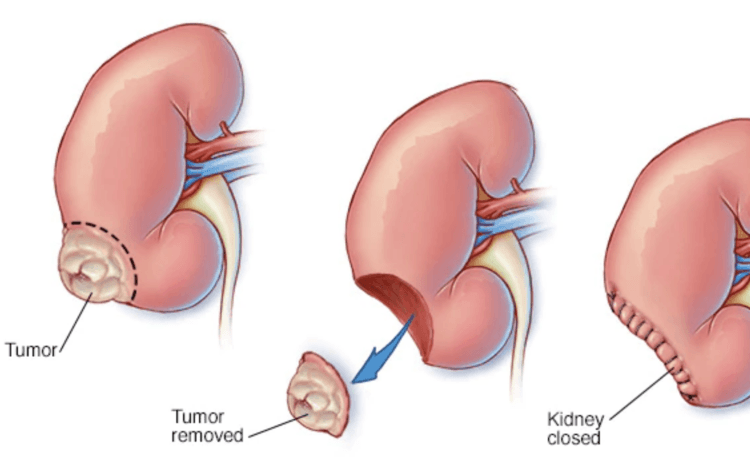Nephrectomy in Argentina
Search and Compare the Best Clinics and Doctors at the Lowest Prices for Nephrectomy in Argentina

Find the best clinics for Nephrectomy in Argentina
No clinics available
Morocco offers the best prices Worldwide
Price: $ 1,228

- Home
- Argentina
WHY US?
At Medijump, we're making medical easy. You can search, compare, discuss, and book your medical all in one place. We open the door to the best medical providers worldwide, saving you time and energy along the way, and it's all for FREE, no hidden fees, and no price markups guaranteed. So what are you waiting for?

Free

Best Price

Widest Selection

Risk-Free
What you need to know about Nephrectomy in Argentina

Nephrectomy is the surgical removal of all or part of a kidney. There are two types of surgery for nephrectomy: radical nephrectomy (to remove the entire kidney and tissues of fat that surround the kidney) and partial nephrectomy (removes only diseased tissue from a kidney and leaves the healthy tissue in place). The surgery is performed to treat kidney cancer and other kidney diseases. Sometimes, it is also performed to remove a healthy kidney from a donor for a transplant.
What does a Nephrectomy Procedure Involve?
Nephrectomy can be performed through laparoscopic or open surgery. Both are performed under general anesthetic. Laparoscopic nephrectomy is usually performed to remove part of your kidney. Your surgeon makes small incisions in your abdomen to insert the laparoscope and small surgical tools. If your entire kidney needs to be removed, your surgeon will use open surgery. During open surgery, your surgeon makes one large incision on your abdomen or along your side.
How Long Should I Stay in Argentina for a Nephrectomy Procedure?
You are required to stay in the hospital for two to five days. Plan to stay in Argentina for around 10 to 14 days because you are likely to develop deep vein thrombosis after the surgery. You will also need to attend follow-up checkups, during which your surgeon will remove your stitches.
What's the Recovery Time for Nephrectomy Procedures in Argentina?
The recovery period after a nephrectomy may take around three to six weeks. During your recovery period, you should avoid any strenuous activity and follow the post-operative instruction that your surgeon gives you. The instruction usually includes dietary restriction, exercise, and care for your healing wounds
What sort of Aftercare is Required for Nephrectomy Procedures in Argentina?
Most people can function well with only one kidney. After the procedure, you can resume your daily routine and activities after 3 weeks. However, you will likely need checkups to monitor kidney function. These include monitoring your blood pressure, waste filtration, and protein urine levels. Since you only have one kidney, you will need to eat a healthy diet and engage in regular exercise to preserve normal kidney function.
What's the Success Rate of Nephrectomy Procedures in Argentina?
Nephrectomy is generally safe and the risks are very small. Partial nephrectomy has about a 95% success rate. Nevertheless, the procedure carries potential risks, such as bleeding, injury to nearby organs, infection, post-operative pneumonia, and rare allergic reaction to anesthesia.
Are there Alternatives to Nephrectomy Procedures in Argentina?
For certain illnesses, there are alternatives that do not need the removal of a kidney. The alternatives include renal embolization.
What Should You Expect Before and After the Procedure
After nephrectomy, you will no longer experience symptoms that you had before the surgery. The risk of cancer, as well as cancer spreading to other parts of your body, is also reduced. Remember that taking care of your remaining kidney is extremely important.
Whilst the information presented here has been accurately sourced and verified by a medical professional for its accuracy, it is still advised to consult with your doctor before pursuing a medical treatment at one of the listed medical providers
No Time?
Tell us what you're looking for and we'll reachout to the top clinics all at once
Enquire Now

Popular Procedures in Argentina
Prices Start From $2,487

Prices Start From $825

Recommended Medical Centers in Argentina for procedures similar to Nephrectomy

- Interpreter services
- Translation service
- Religious facilities
- Medical records transfer
- Medical travel insurance
- Health insurance coordination
- TV in the room
- Safe in the room
- Phone in the room
- Private rooms for patients available

- Interpreter services
- Translation service
- Religious facilities
- Medical records transfer
- Medical travel insurance
- Health insurance coordination
- TV in the room
- Safe in the room
- Phone in the room
- Private rooms for patients available

- Interpreter services
- Translation service
- Religious facilities
- Medical records transfer
- Medical travel insurance
- Health insurance coordination
- TV in the room
- Safe in the room
- Phone in the room
- Private rooms for patients available

- Interpreter services
- Translation service
- Religious facilities
- Medical records transfer
- Medical travel insurance
- Health insurance coordination
- TV in the room
- Safe in the room
- Phone in the room
- Private rooms for patients available

- Interpreter services
- Translation service
- Religious facilities
- Medical records transfer
- Medical travel insurance
- Health insurance coordination
- TV in the room
- Safe in the room
- Phone in the room
- Private rooms for patients available

- Interpreter services
- Translation service
- Religious facilities
- Medical records transfer
- Medical travel insurance
- Health insurance coordination
- TV in the room
- Safe in the room
- Phone in the room
- Private rooms for patients available

- Interpreter services
- Translation service
- Religious facilities
- Medical records transfer
- Medical travel insurance
- Health insurance coordination
- TV in the room
- Safe in the room
- Phone in the room
- Private rooms for patients available
Nephrectomy in and around Argentina
Introduction
Argentina is beautiful and intriguing, the country’s cultural diversity, coupled with its beautiful nature, ensures a wide-ranging natural and cultural experience for tourists. Today, Argentina is emerging as one of the most important destinations in the world for medical tourism. Today, you will find highly-experienced healthcare professionals, medical centers with cutting-edge technology, personalized patient care, and high-quality services. The majority of medical tourists in this country arrive from Latin American countries, the USA, and Canada. These medical tourists travel to Argentina to undergo dentistry, bariatric surgery, breast implants, and ophthalmology.
Popular Cities and Regions in Argentina
Known as the ‘Paris of South America,’ Buenos Aires is the capital and largest city in Argentina. It is known for its heavy European influence, which makes it diverse and vibrant. In this lively city, you will be welcomed with a dynamic food scene, magnificent architecture, colorful murals, lively nightlife, and glamorous tango. One of the most popular places in Argentina, besides Buenos Aires, in Córdoba, which is a fascinating city with a blend of old and new. In this city, you can find DJs spinning electro-tango next to 17th century Jesuit ruins. Another famous tourist destination is Mendoza. Filled with atmospheric plazas, leady avenues, and cosmopolitan cafes, this city captivates its tourists by its laid-back vibe. Those looking to relax on a beach should definitely visit Mar del Plata or Pinamar, where you can soak up some sun and have a lot of fun.
Transport in Argentina
Ezeiza International Airport is the largest airport in Argentina, located in Greater Buenos Aires. It connects the country with almost every country in the world, such as the US, Mexico, France, the UK, and the UAE. Since Argentina is very large, traveling around the country is easier with domestic flights. However, buses are popular among those who want to appreciate the country’s landscape. The best way to travel inside cities is by renting a car.
Visas in Argentina
Citizens of several countries, including Brazil, Ecuador, and the US, can visit and stay in Argentina without a visa for up to 90 days. Most other nationalities need to apply and obtain a visa to enter the country.
Weather in Argentina
Given the immense size of the country, the weather varies widely from one region to another. Buenos Aires tends to be hot from December to March, but it is very pleasant to visit between July and August. The south of Argentina is nice to visit from December to March, while July and August tend to be very cold. North Argentina has three climate zones and areas around the Iguazu Falls are generally tropical with humid weather.
Additional Info
- Local Currency: Argentine peso (ARS) is the official currency. 1 USD is equivalent to 62 ARS.
- Money & Payments: You can find ATMs in nearly every city in Argentina. Most hotels, restaurants, and stores in major cities accept credit cards (Visa and MasterCard).
- Local Language: Spanish is the main language in the country. English is also widely spoken as it is obligatory in primary school.
- Local Culture and Religion: Argentina is an overwhelmingly Christian country. Only a small percentage of the population practices other religions, such as Buddhism, Hinduism, Islam, and Judaism.
- Public holidays: Public holidays in Argentina usually include Catholic based holidays, such as Christmas, although other religious holidays such as the Islamic New Year is celebrated. The country also celebrates historic holidays, such as Independence Day.
Popular Searches
- Plastic Surgery in Thailand
- Dental Implants in Thailand
- Hair Transplant in Thailand
- Breast Augmentation Thailand
- Gastric Sleeve in Thailand
- Gender Reassignment Surgery in Thailand
- Laser Hair Removal in Bangkok
- Botox in Bangkok
- Dermatology in Bangkok
- Breast Augmentation in Bangkok
- Coolsculpting in Bangkok
- Veneers in Turkey
- Hair Transplant in Turkey
- Rhinoplasty in Turkey
- Stem Cell Therapy in Mexico
- Rhinoplasty in Mexico
- Liposuction in Mexico
- Coolsculpting in Tijuana
- Rhinoplasty in Korea
- Scar Removal in Korea
- Gastric Sleeve in Turkey
- Bone Marrow Transplant in India
- Invisalign in Malaysia
- Plastic Surgery in the Dominican Republic
- Tummy Tuck in the Dominican Republic
- Plastic and Cosmetic Surgery in Poland
- Rhinoplasty in Poland
- Hair Implant in Poland
- Dental Implants in Poland
- IVF in Turkey